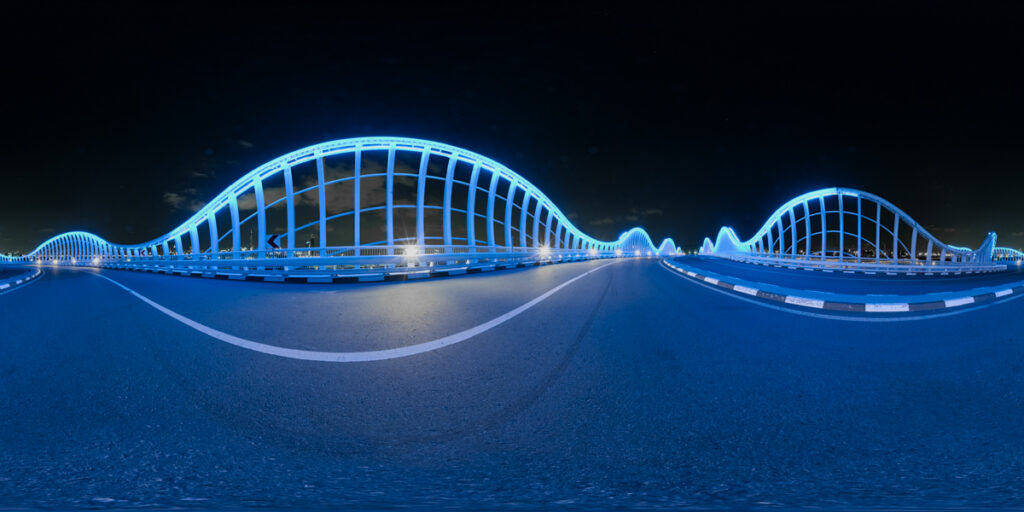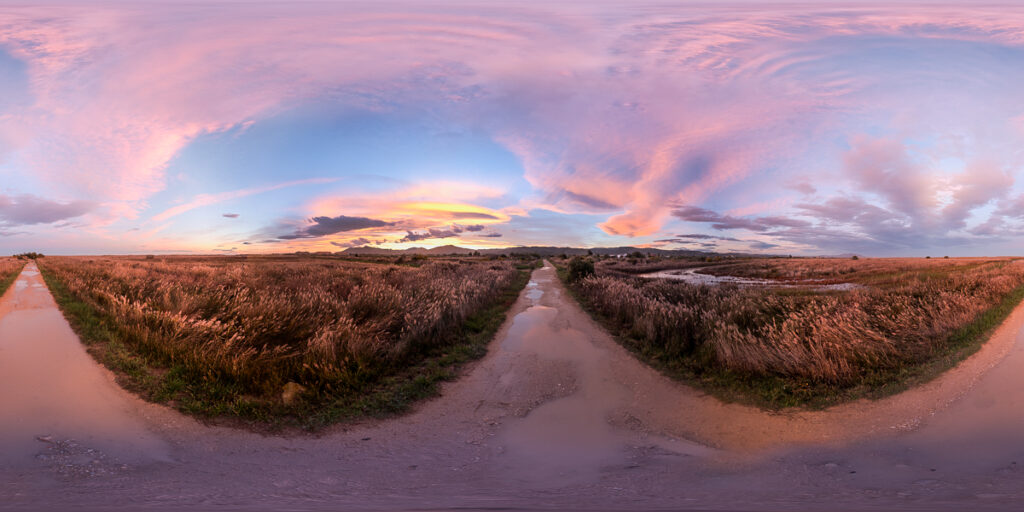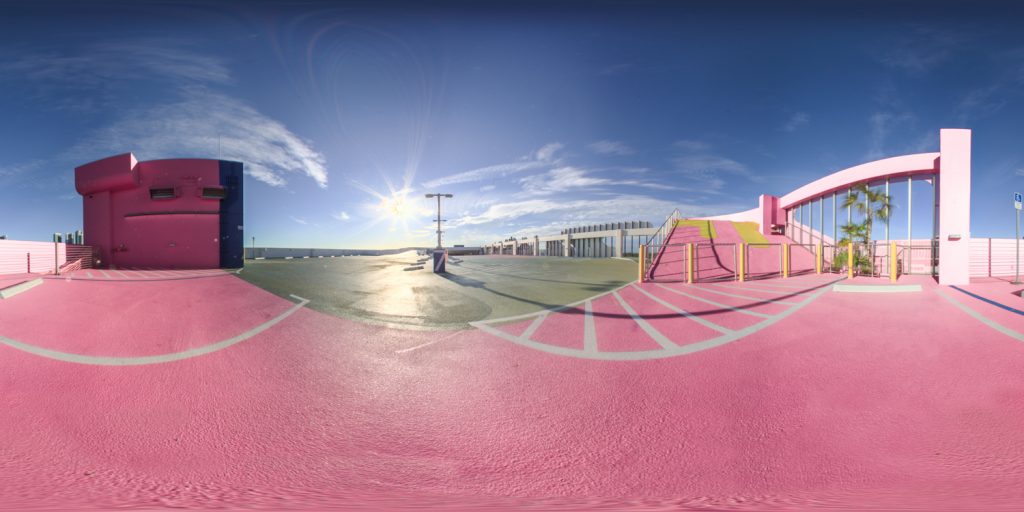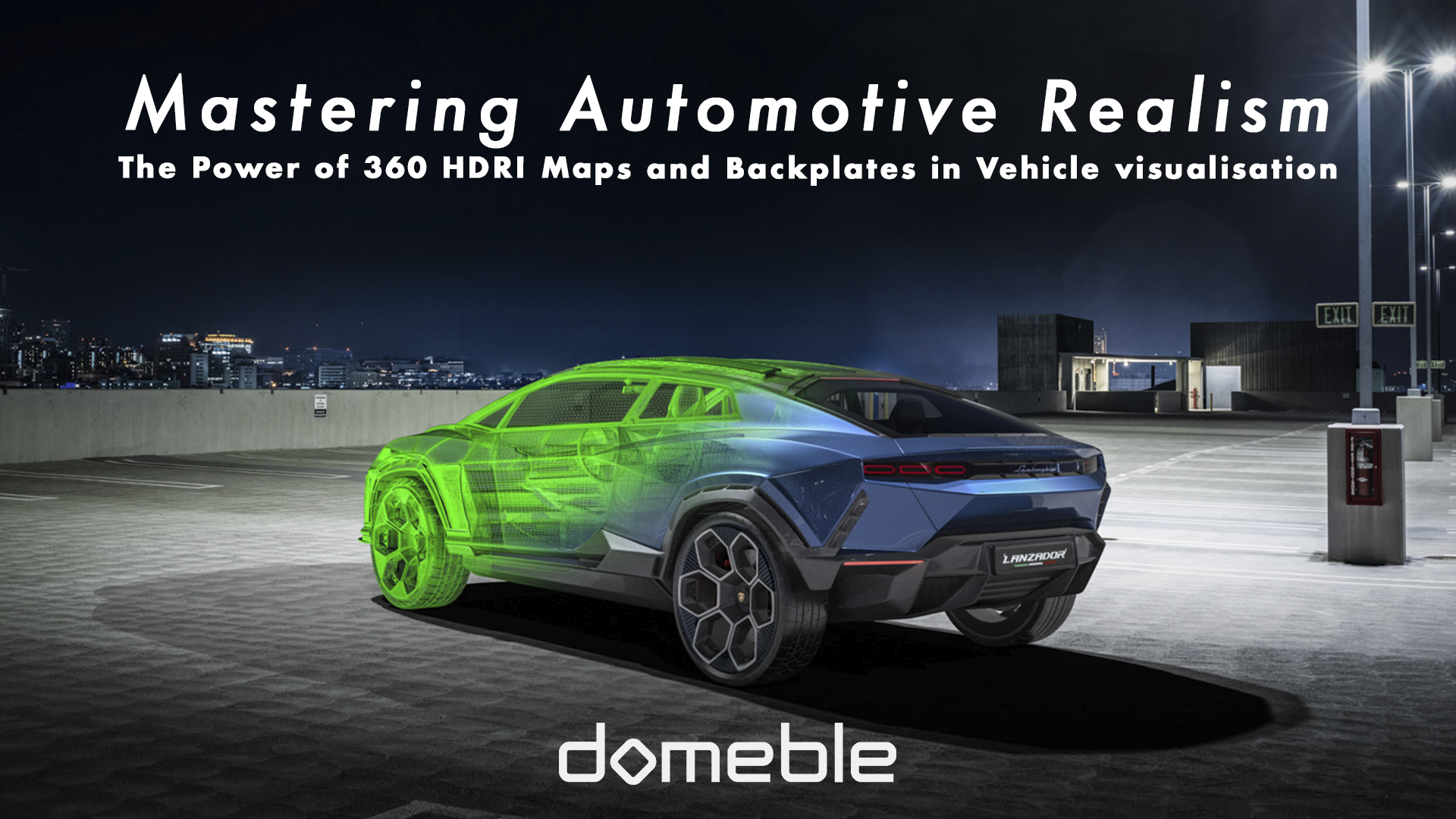The Power of 360 HDRI Maps and Backplates in Vehicle Visualisation
In the fast-paced world of automotive marketing, the ability to create stunning, photorealistic visualisations of vehicles has become a crucial competitive advantage. Gone are the days that a Viz department just did development and concept images, they are now producing finished imagery that is slick and artistic that cross over seamlessly as highly polished public domain marketing material.
As technology evolves, so too do the techniques used to showcase cars in their best light. One of the most revolutionary advancements in this field has been the adoption of 360 HDRI (High Dynamic Range Imaging) maps and CG backplates captured by automotive photographers that understand the spatial proportioning of a CG image.
This blog post will explore how these powerful tools are reshaping the landscape of automotive visualisation.
The Evolution of Automotive Visualisation
The journey from traditional photography to today’s hyper-realistic 3D renders has been nothing short of remarkable. In the early days, automotive marketing relied heavily on studio photography and hand-drawn illustrations. As computer graphics and technology advanced, basic 3D modelling and rendering techniques began to emerge, offering new possibilities for showcasing vehicles in various environments and from multiple angles.
However, back in 2005 when I first started experimenting in CG, these early computer-generated images often lacked the nuanced lighting and reflections that make a car truly “pop” in an image. This is where HDRI technology has made a game-changing impact, and what inspired me to use my automotive photography expertise to create a collection of quality backplate and 360 HDRI images, that today the industry knows as Domeble.
Understanding 360 HDRI Maps in Automotive Contexts
HDRI, or High Dynamic Range Imaging, is a technique that captures a much wider range of luminosity than standard digital imaging. When applied in a 360-degree format, it creates a spherical image that encompasses an entire environment. For automotive visualisation, this means capturing not just the light sources in a scene, but also all the subtle reflections and ambient lighting that interact with a vehicle’s surface.
The power of 360 HDRI maps lies in their ability to provide a complete lighting environment for 3D renders. Instead of manually placing dozens of light sources to mimic real-world lighting (that often looks artificial), artists can simply apply a 360 HDRI map to their scene. This not only saves time but also results in much more realistic and naturalistic lighting and often doubles as the background.

The Role of HDRI Environments in Creating Photorealistic Renders
When a 360 HDRI map is applied to a 3D scene, it serves two crucial functions:
- Lighting: The HDRI provides accurate, real-world lighting information. This includes the intensity, colour, and direction of light from all angles.
- Reflections: The spherical nature of the HDRI map means that it can provide realistic reflections on the vehicle’s surface, mimicking how a real car would reflect its environment.
The difference between traditional lighting setups and HDRI-based lighting is stark. Traditional methods often result in renders that look “CG” or artificial, with uniform lighting that doesn’t quite match real-world conditions. HDRI-based lighting, on the other hand, can create renders that are today indistinguishable from real photography, and include all the subtle nuances of natural light and global illumination.
Sourcing and Creating 360 HDRI Maps
For those new to HDRI technology, there are some free 360 HDRI resources available online, but these are now becoming repetitive to the industry and don’t carry commercial licences, but they are a good source for hobbyists. These can be great for learning and experimentation. However, for professional automotive visualisation, custom HDRI capture and a collection like Domeble are often necessary to achieve the perfect look.
Capturing custom HDRI environments involves using specialised equipment, including DSLR cameras with fisheye lenses or dedicated 360-degree cameras. The process typically involves taking multiple exposures of a scene to capture its full dynamic range, then stitching and processing these images into a single, high-quality HDRI file.

Integrating 360 HDRI Backplates in Automotive Scenes
While HDRI maps provide lighting and reflections, HDRI backplates offer a photorealistic background for your 3D vehicle models. These are typically high-resolution, 360-degree photographs of real environments that can be seamlessly integrated with 3D renders.
The key to successfully using HDRI backplates lies in matching the perspective and lighting of your 3D model to the backplate. This often involves careful camera matching and fine-tuning of the HDRI lighting to ensure that shadows and reflections on the vehicle align perfectly with the background environment.
Advanced Techniques in HDRI-Based Automotive Visualisation
As artists and technicians become more adept with HDRI technology, new advanced techniques are emerging:
- Multi-HDRI setups: By blending multiple HDRI maps, artists can create complex lighting scenarios that aren’t possible with a single HDRI.
- Real-time HDRI rendering: With the advancement of GPU technology, it’s now possible to use HDRI lighting in real-time 3D environments, opening up immersive scene possibilities for interactive car configurators and VR experiences.
- AI-enhanced HDRI processing: Machine learning algorithms are being developed to improve the quality of HDRI maps, remove unwanted elements, and even generate entirely new HDRI environments.
Case Studies: The Impact of 360 HDRI
The proof of HDRI’s effectiveness is in the final product. Many automotive brands have seen significant improvements in the quality and impact of their marketing visuals after implementing HDRI techniques. For example, a luxury car manufacturer reported a 30% increase in online engagement after switching to HDRI-based activity for their website and social media content.
Another case study involved a sports car launch where HDRI technology was used to create a series of images showcasing the vehicle in multiple locations – all without ever moving the actual car from the studio. This resulted in a 70% reduction in production costs compared to traditional on-location shoots, while still delivering stunning, photorealistic results.

Future Trends: HDRI in Emerging Visualisation Technologies
As we look to the future, HDRI technology is set to play an even more significant role in automotive visualisation:
- AR/VR Experiences: 360 HDRI maps are crucial for creating realistic lighting in augmented and virtual reality environments, allowing potential customers to experience vehicles in various settings.
- AI-Generated Environments: here at Domeble we will be launching our AI generator very soon, offering the possibility to generate photorealistic HDRI environments on demand, offering endless possibilities for unique and customised vehicle presentations.
Elevating Your Automotive Visualisation with 360 HDRI
The adoption of 360 HDRI technology in automotive visualisation represents a quantum leap in our ability to create compelling, photorealistic imagery. By providing accurate lighting, realistic reflections, and seamless integration with real-world environments, HDRI maps and backplates have become indispensable tools in the modern automotive marketing toolkit.
As we’ve explored in this post, mastering HDRI techniques can significantly enhance the quality of your automotive renders, reduce production costs, and open up new creative possibilities. Whether you’re just starting with free HDRI resources or pushing the boundaries with custom captures and advanced techniques, the future of automotive visualisation is bright – and it’s lit by HDRI.
Resources and Tools
To get started with HDRI in automotive visualisation, consider exploring these resources:
- Domeble 360 HDRI Packs: Try out our free image sets here.
- PT GUI: Our favourite software for stitching and 32k 360 HDRI creation.
- Autodesk VRED: Industry-standard software for automotive visualisation with robust HDRI support, including Domeble image sets to try.
As a footnote, while tools and resources are the gateway to successful CGI production, the key to mastering HDRI-based visualisation lies in practice, experimentation, and a keen eye for real-world lighting. Our advice to aspiring automotive visualisers is to keep your own reference library of real cars in real scenes in different lighting and different environments, this will provide a true world indicator of how the lighting and reflections interact with the car. Happy rendering.










